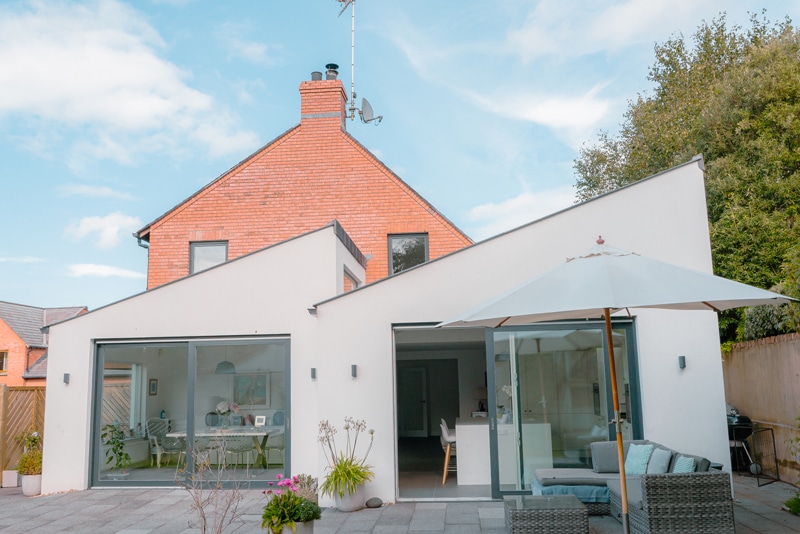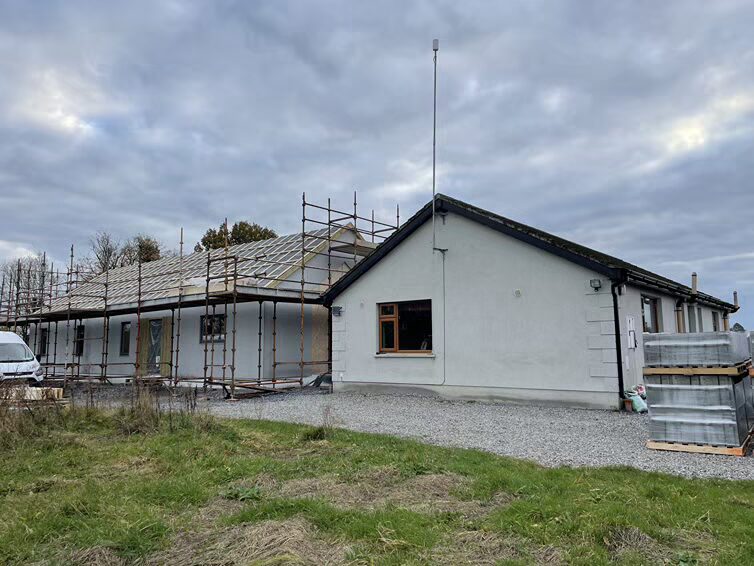When we carry out work at home the safety aspect seems to the be the last thing on our mind, until something happens that is! Here’s a real-life example of how to get the builders on board without sounding like a schmuck.
At some stage, we will all have someone in our home doing a little bit of painting, plumbing, carpentry or perhaps even proper building work. It could be a large undertaking with a project manager to handle the job, and you may even be lucky enough to vacate your home and leave the professionals to it.
So, should we leave it up to them to take care of everything including all safety matters? The first thing to consider is whether your project falls within the regulations (see next page). But even if they don’t, there is the ethical question – should we ignore safety for ourselves or indeed the people working in our home, even on the smallest of jobs?
Would you leave your child alone in the middle of a construction site or indeed would you wander through a building site in your nice shoes and casual clothes? Sadly sometimes that’s exactly what we do when we have work going on in our homes, most times it turns out ok but why take the risk when some simple precautions could possibly prevent an accident to you or your family members or to the person working in your home.
Even if the job is only going to take an hour or less, doing it in a safe manner should be at the top of the list and the number one priority for all concerned. How many times do we have to get or do something overhead? So, we use a chair or a stool of sorts (Ah sure, it’ll only take a sec!) rather than getting the step-ladder or a proper step-up platform.
If there is an architectural designer or a builder involved, let them know from the outset that you are anxious to have all precautions in place to prevent anyone getting hurt. Make safety a specific topic at the beginning to ensure that everyone puts as much focus into this as area as they are with all of the other elements, such as the budget.
For larger projects even if your builder acts as the health and safety supervisor, you still have obligations as a homeowner to take every precaution to make the site safe. As you are probably most likely to be on site on a regular basis at the very least to check out the progress and the quality of the works or, probably more important to you on a personal level, to check that you are getting what you want and are paying for, you should also check basic safety aspects.
‘For larger projects even if your builder acts as the health and safety supervisor, you still have obligations as a homeowner to take every precaution to make the site safe.’
Observations
On a general front, even if you are not trained in safety it is pretty easy to see if the workers are carrying out the work in a safe manner, no matter if the job is big or small some basic observations can give you an immediate feel if the safety aspects are being respected.
This is where it will help to visit the site your builder is working on before you hire him. Simple observations for example could include:
- Are the work areas being kept clean? l Is cleaning being done as the work progresses?
- Are there any trip hazards such as trailing cables and such like?
- Depending on the work involved is there personal protection available such as dust masks, safety goggles (it goes without saying that the basic safety shoes, high viz vests and hard hats should be in place)
- Is the access into and from the work area clear and without obstructions? Is there a safe means of entry/exit – e.g. a sturdy step?
- If the work is above ground level does the access platform look safe? If it is a scaffold has it got handrails, toe-boards and is it fully boarded out? Is there an access ladder in place?
It is common knowledge that most accidents occur in the home, however when there is work being carried out either by ourselves or others the risk increases.
My ‘safety talk’
My own family laughed at me when I gave a safety talk to the builders recently when they were about to start work on an extensive kitchen/dining refurbishment in my own home (complete strip out including ceiling, a new rooflight, new window and plasterboard with insulation).
I did my best to make this very casual, carefully trying to make it sound that it was not a safety talk but just that I was pointing out a few things, including:
- The location of the fire extinguishers, joking that I hoped they would not need them
- Where they would find sticking plasters and basic first aid kit
- Location of the toilets and the kettle – very important to builders
- Pointed out that I hoped they would use a scaffold outside when they were installing the rooflight, which is at a fairly low level but the roof pitch is quite steep
- Location of the electricity board (ECLB) and the mains water stop valve
Less than 30 minutes later (I kid you not) as they were taking off the wall ceramic tiles, one of the workers came looking for the first aid kit, it happened that he needed a plaster as he had cut his hand rather badly. He did not need stitches but I was glad we had put some protection on the carpets.
Then a few days later when the roofer came to install a new rooflight I happened to hear him arguing with the builder that he needed to start immediately as he had to go to another job that day and that he did not need a scaffold as it was a low roof. I was delighted to hear the builder insisting that he did and made him hold off until the scaffold was installed, this took about 15 minutes. Less than three hours later the rooflight was in place and the roof sealed.
Despite the cut finger, we were really pleased with the way the builder progressed the works, always working in a clean manner, courteous at all times – which is actually a very important aspect when you’re practically living with your builder for the time of the works – taking care to ensure good quality, and taking our comments and minor changes on board with no hassle.
We were delighted with the end result, a modern kitchen and dining area, with additional storage units and electrical sockets, and lots of natural daylight from the rooflight over the dining area and the bigger window giving a nice view of the back garden.
Although now we feel compelled to do a bit of landscaping work!
Success or failure
To put this in context, despite the number of books and articles written on project management and construction, having started as a carpenter and spent my life in construction, in my own career as a project manager I used to say that in simple terms there were really only five elements to get right:
- Health and safety: did anyone get hurt during the job?
- Functionality of design: does everything work, is it fulfilling the brief?
- Cost: was the job within budget? Did the builder make a profit, as he should?
- Schedule and planning: was the job finished within the estimated time schedule?
- Quality of work: were you satisfied with the quality of the finish and of the materials?
If one element doesn’t deliver, then the project fails in whole or in part. Health and safety is in many ways the most critical aspect and one you need to take ownership of – legally but also morally.





















